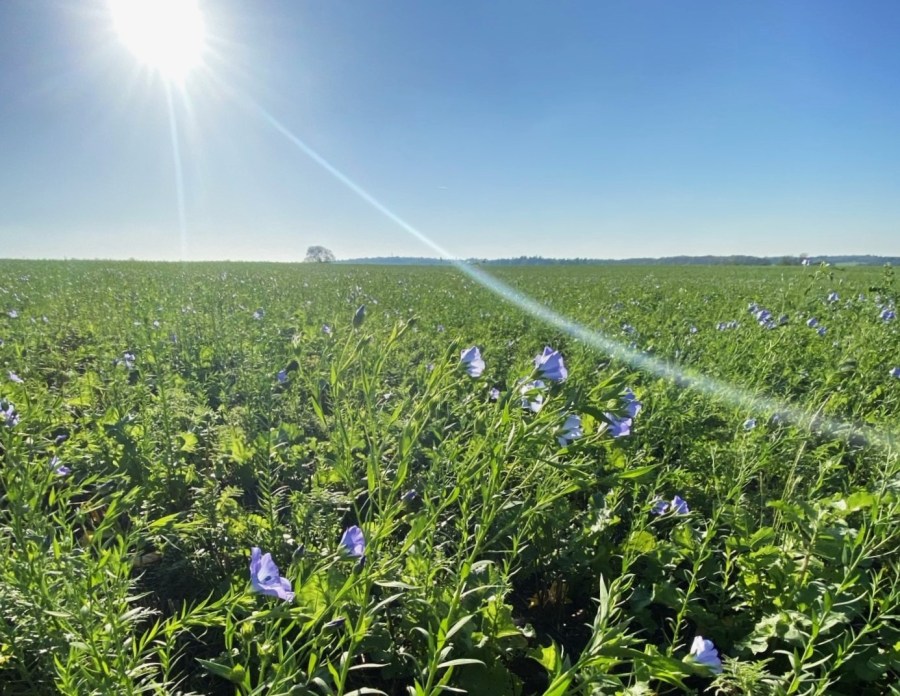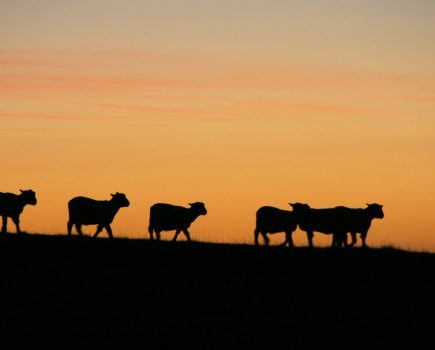How to successfully grow cover crops is still a much-debated subject, however, AHDB is using its group of Champions to improve knowledge exchange. CPM finds out more…
“If you see long-term benefits to your soils which allow you to reduce inputs, you can start to realise financial benefits.” BOB KING
By Mike Abram
From what initially felt like a missed opportunity to increase soil organic matter and capture nutrients, Wiltshire grower, Bob King, has integrated cover crops into a system that’s improving soil health on his 250ha farm just north of the Salisbury plain.
Bob, one of eight AHDB Cover Crop Champions, says his interest in the technique started while power harrowing a field in a dry autumn. “I was sitting on the tractor trying to smash concrete golf ball-sized lumps of soil into something slightly smaller and not succeeding,” he recalls.
“It’s then you question, am I doing this right? If soils are that degraded and lacking in structure and organic matter, something is going to fail at some point.”
That realisation set in train a series of changes implemented during the past 10-15 years – transforming a broadly conventional establishment system for oilseed rape, winter wheat, spring beans and winter wheat into direct drilling a much more diverse range of crops over a flexible 10-year rotation, including cover crops and two-year herbal leys.
According to Bob, three things are central to the new system: improving soil health, integrating livestock into the rotation, and increasing resilience against the challenges his conventional approach was facing.
“I was conscious that the conventional system was starting to show weaknesses,” he says. “We were seeing resistant blackgrass persisting whereas yields had plateaued to around 9t/ha for winter wheat which I couldn’t see increasing, while costs were.”
Initially, cover crops were limited to mustard before forage maize to protect soils over winter, but after a few seasons and with growing concern regarding his farming system, Bob wanted to extend growing cover crops into the wider arable rotation.
“The biggest challenge was dealing with the trash from the cover crop before establishing a spring cereal or spring bean crop earlier in the season than you have to with maize.”
After struggling, he says the turning point was buying a John Deere 750A direct drill. “That provided the solution as it was able to drill into heavy residue and opened the door to growing broader mixes of cover crops.”
Direct drilling also unlocked another unexpected benefit which has played a role in shaping how cover crops are utilised on the farm – finding the soils were much better at carrying livestock. “When we were working soils to establish a cover crop in a min-till system, as soon as there was any wet weather on our clay loam over clay soils, you’d quickly find you’d struggle to run much stock.
‘’By not moving soil, we found we could run sheep on the cover crops and they wouldn’t poach as much as if we had moved it,” explains Bob.
That led to a partnership during the past four years with local sheep farmer, Tim White, taking on up to 300 Exlana ewe lambs to complement Bob’s small flock of Wiltshire Horns to graze all overwintered cover crops, plus the herbal leys. “We quickly saw the benefits of grazing with quicker nutrient cycling,” comments Bob.
Management is key with the sheep, he points out. “We graze quickly and not too hard early on to get some regrowth. I would sooner have two grazing periods than hitting it hard and only getting one.”
The cover crops, now with multi-species mixes tailored for grazing, are established after winter cereals. “We find brassicas are key in the mix – I’m looking for as much cover as possible, plus winter hardiness, which brassicas bring. Including more stubble turnips makes the mix cheaper and the sheep do well on them.”
He adds diversity to mixes with species such as crimson clover, vetch, phacelia and forage rape, alongside the turnips and tillage radishes, but recognises legumes won’t fix much nitrogen overwinter. Equally, grass species are avoided after discovering they could quickly become a weed in following cereal crops, says Bob.
“With brassicas, clubroot can be an issue but we’ve extended our rotation to grow less OSR, and rightly or wrongly, I think acidic soils favour clubroot. By improving soil health of our chalk-based soils we mitigate that risk – at least so far,” he adds.
Establishment takes place as soon after harvest as possible using a mounted seed box to broadcast in front of a stubble rake. “It’s a cheap system where we can cover 40ha in a morning before combining easily.”
Moisture is key, and in most years when there’s been rain in August, establishment has been good, explains Bob. Whereas last year, in his first year of being an AHDB Cover Crop Champion, a dry August contributed to a less successful outcome, he says.
“For the AHDB trial we established a cover crop in two fields, with and without a small degree of soil movement. The former provided a better result this year.”
Even so, Bob doesn’t envisage changing his establishment system unless absolutely necessary as moving soil reduces the grazing window – something he says he’s keen to avoid.
The trial includes logging metrics such as results from soil mineral nitrogen tests in early autumn and in March, and peak biomass and nutrient analysis in December. Nitrogen use efficiency and yield impact on the following spring barley crop will also be monitored.
In Bob’s system, the following crop is often a low input cereal within a Countryside Stewardship scheme – although that expires later this year. He believes that’s allowed him potentially more flexibility with termination dates with yield a lower priority.
“We’re limited on the herbicides we can use, so I want it to go in warm soils and come out of the ground quickly.”
With cover cropping on the farm not directly part of either Countryside Stewardship or Sustainable Farming Incentive schemes, he relies on the low input cereal payment and agronomic benefits, as well as income from grazing to cover the costs of growing the covers.
However, growing a cover crop can potentially generate multiple income streams from carbon capture, SFI or similar schemes, and grazing, he notes. “If you then also see long term benefits to your soils, increasing soil organic matter and soil health that allows you to reduce inputs, you can start to realise financial benefits. That’s something I’d like to see explored in the work with AHDB,” he raises.
Over in the South East, AHDB Cover Crop Champion Rob Waterston of the Welford Estate near Newbury says he’s keen to better understand nutrient dynamics, particularly whether growing a cover crop can reduce nitrogen inputs on following crops.
“I can never quite understand what to practically do with data showing the quantity of nutrients captured by cover crops in fresh weight cuts,” he explains. “If you look at the results, sometimes you could argue you don’t have to put any nitrogen on your spring crop, yet you only have to experience a fertiliser miss to see the difference.”
To investigate further, albeit a little crudely, he’s undertaking a tramline trial with nitrogen rates of 70, 80, 90 and his farm standard 110kgN/ha in spring barley following an overwintered cover crop.
Each tramline will be cut and weighed over a weighbridge with grain samples sent for analysis. “I’m hoping to see some trends; I suspect we might have differences in grain nitrogen content and possibly yield,” says Rob.
With a contract for malting spring barley looking for a spec of at least 1.6% grain N, but with penalties for being too high, achieving the correct combination of both grain N and yield is crucial, he notes.
But how did is journey to cover cropping begin? Rob says he first started growing them at the estate just under 10 years ago having added spring barley to the system to help manage blackgrass which was starting to get out of control in his previously winter crop-dominated rotation.
After initially starting with brassica-based cover crops, he moved away after finding they were increasing slug pressure, even in spring crops. He’s also steered away from cereals in mixes because of competition effects with less aggressive species in cover crop mixes.
“We’ve settled on a mix of vetch, linseed, buckwheat, berseem clover and phacelia. We add a tiny bit of oil radish, although the jury is out because of slugs.”
He says a key aim is mopping up nutrients to protect the river Lambourn, which runs through the heart of the estate. “It’s a chalk stream so it’s important to look after,” stresses Rob. “I also wanted to get our soil’s functioning and cycling nutrients better, so we could wean ourselves off some inorganic fertiliser.”
According to Rob, soil biology is responding – especially in the farm’s gravel soils – to the use of cover crops, alongside other soil health improving measures such as additions of organic amendments and reduced cultivations. Consequently, organic matter levels are increasing on around 95% of the farm’s fields, he points out.
And, all of his cover crops are in an SFI scheme. “I’m sure the soil is better, so without that funding I would still grow them but we’d probably look at a much cheaper mix or even growing our own seed,” he concludes.
This article was taken from the latest issue of CPM. Read the article in full here.
For more articles like this, subscribe here.
Sign up for Crop Production Magazine’s FREE e-newsletter here.




